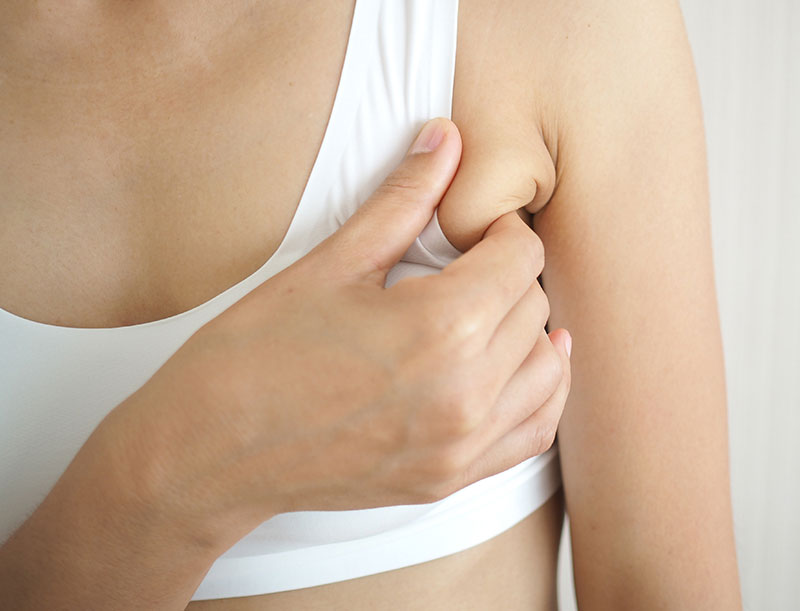ACCESSORY AXILLARY BREAST TISSUE
Accessory breast tissue, which is also known as polymastia or ectopic breast tissue, is a common congenital condition in which abnormal accessory breast tissue is seen in addition to the presence of normal breast tissue. More specifically, ectopic breast tissue is an umbrella term that refers to both supernumerary breasts as well as aberrant breast tissue (located in proximity of the breast).
It can present as a mass anywhere along the course of the “mammary lines”, or milk lines, extending from the armpits to the normal chest nipples, and downwards to the groin or inner thigh. However, locations outside the milk line, including the face, posterior neck, chest, middle back, buttock, vulva, flank, hip, shoulder, upper extremities, and posterior and lateral thigh have also been reported.
To varying degrees, this can affect 2-6% of women and 1-3% of men. The highest incidence occurs in the Japanese population, with the lowest incidence in white individuals.
Most women are unaware of their accessory breast tissue. Discomfort, pain, milk secretion, axillary thickening, and local skin irritation can occur. In addition, accessory breasts can cause anxiety and cosmetic problems.
Accessory breast tissue responds to hormonal stimulation and may become more evident during menarche, pregnancy, or lactation. In addition, supernumerary nipples can be present.
It is also important to remember that both benign and malignant diseases of ectopic breast tissue in adult women have been described. Breast cancer can rarely occur in accessory breast tissue, particularly if the tissue is larger and more developed. If you notice any symptoms, such as swelling and tenderness, or restriction in the range of arm motion, or are otherwise concerned, you should see your doctor.
No treatment is required in most cases. The treatment of choice for symptomatic accessory axillary breast tissue is surgical excision as removal of the tissue will relieve physical discomfort or mechanical discomfort in the case of large volume accessory tissue. Accessory breast tissue may also be removed for cosmetic reasons. In the axilla, accessory breasts can be satisfactorily treated with excision, liposuction, or both.
Frequently Asked Questions
Q1: What is axillary breast tissue, exactly?
A1: Ectopic breast tissue, sometimes referred to as accessory breast tissue or polymastia, is a congenital disorder in which abnormal accessory breast tissue coexists with normal breast tissue. It might appear as a mass along the milk lines, also known as the mammary lines, which run from the armpits to the chest nipples and then downhill to the groin or inner thigh.
Q2: What signs or symptoms might there be of supplementary breast tissue?
A2: Accessory breast tissue can cause discomfort, soreness, milk secretion, axillary thickening, and localised skin irritation. Accessory breasts can also lead to anxiety and aesthetic issues.
Q3: How frequently does supplementary breast tissue occur?
A3: Accessory breast tissue affects 2-6% of women and 1-3% of men, with Japanese people experiencing the highest occurrence and white people experiencing the lowest incidence.
Q4: Can breast cancer develop in tissue around the breasts?
A4: Accessory breast tissue can sporadically develop breast cancer, especially if the tissue is larger and more developed. You should consult a doctor if you experience any symptoms, such as pain and swelling, or if your arm’s range of motion is restricted.
Q5: What is the course of action for extra breast tissue?
A5: Most of the time, no therapy is necessary. Surgical excision is the preferred course of treatment for symptomatic accessory axillary breast tissue to alleviate pain, whether mechanical or physical, or for cosmetic purposes. Accessory breasts in the axilla can be removed surgically, by liposuction, or both.

Recent Comments